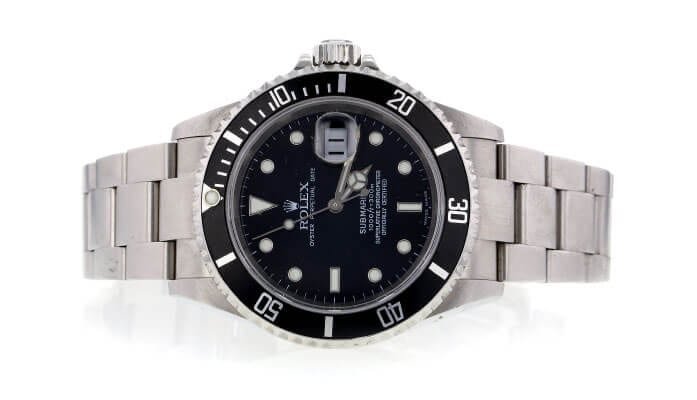For investors seeking to diversify portfolios and hedge against economic uncertainty, gold remains a perennial favorite. Yet in today’s world, simply chasing returns is no longer enough. Environmental and ethical considerations in gold investing have become paramount, shaping not only how gold is mined and traded, but also how investors select, hold, and divest their positions. In this comprehensive guide, we delve into the ecological footprint of gold mining, the human rights implications in gold supply chains, the rise of responsible sourcing standards, and practical strategies for investors to align their gold investments with green and ethical values without sacrificing financial performance.

The Environmental Impact of Gold Mining
Gold Mining and Ecosystem Degradation
Gold mining—whether in large-scale open-pit operations or small artisanal mines—wreaks havoc on ecosystems. Massive earth-moving, chemical leaching, and deforestation accompany gold extraction:
- Open-pit mining removes entire hillsides, leaving behind scarred landscapes where biodiversity once thrived.
- Heap leaching uses cyanide or mercury to separate gold from ore, resulting in toxic runoff that contaminates soil and water.
Investors who ignore these realities may inadvertently fund operations that degrade forests, pollute rivers, and destroy habitats for endangered species.
Water Consumption and Pollution
Gold mining is water-intensive. According to industry estimates, producing one ounce of gold can require up to 20,000 liters of water. Tailings dams—long-term repositories for toxic waste—often leak or collapse, releasing heavy metals and acids into local water sources. In regions like Latin America or sub-Saharan Africa, communities downstream of mines face elevated rates of waterborne diseases and loss of arable land.
Ethical Issues in Gold Supply Chains
Human Rights and Artisanal Mining
Approximately 20% of global gold originates from artisanal and small-scale mines (ASM). While these operations provide livelihoods for millions, they also raise severe ethical concerns:
- Child labor is still reported in parts of Africa and Asia, where children work in dangerous conditions underground.
- Unsafe working practices lead to chronic health problems from mercury exposure and cave-ins.
- Illicit trading funds armed groups in conflict zones, perpetuating violence and impeding socioeconomic development.
Investors committed to ethical sourcing must scrutinize whether their gold comes indirectly from ASM without proper safeguards.
Indigenous Rights and Community Displacement
Large-scale mines often encroach on indigenous territories. Displacement without free, prior, and informed consent (FPIC) violates international conventions on indigenous rights. Social conflicts erupt when communities lose forests, sacred sites, and water sources, only to receive minimal compensation.
Global Standards for Responsible Gold Sourcing
The Responsible Gold Mining Principles (RGMP)
The World Gold Council introduced RGMP to guide large-scale producers toward environmental stewardship, human rights protection, and transparent governance. Key principles include:
- Biodiversity Management: Minimize habitat loss and implement restoration plans.
- Water Stewardship: Monitor water use, ensure effluent quality, and engage stakeholders.
- Human Rights: Uphold labor standards, prohibit child and forced labor, and respect indigenous lands.
- Community Engagement: Establish grievance mechanisms, invest in local development, and share benefits.
Investors should favor gold mining companies certified under RGMP or similar frameworks.
Fairmined and Fairtrade Gold Certifications
For small-scale operations, Fairmined and Fairtrade Gold offer assurance that artisanal miners receive fair prices, work safely, and invest in community development:
- Fairmined gold demands compliance with strict social, labor, and environmental criteria, verified through third-party audits.
- Fairtrade Gold ensures miners earn a premium beyond market prices, which is reinvested in health, education, and infrastructure projects.
By purchasing or investing in funds that source Fairmined and Fairtrade gold, investors can support grassroots ethical mining and poverty alleviation.
Recycled Gold: A Sustainable Alternative
The Case for Secondary Gold
Up to 30% of global gold supply comes from recycling old jewelry, electronics, and industrial scrap. Recycled gold avoids the environmental toll of new mining and reduces reliance on high-risk supply chains. Sustainable investors should consider:
- Gold exchange-traded funds (ETFs) that hold a portion of their assets in recycled bullion.
- Jewelry makers who specialize in upcycled gold, guaranteeing traceability back to recycled sources.
The shift toward secondary gold can significantly lower water consumption, greenhouse gas emissions, and land disruption associated with primary mining.
ESG Integration in Gold Investment Products
Green Gold ETFs and Funds
Several asset managers now offer environmental, social, and governance (ESG)-oriented gold investment vehicles:
- ESG-screened gold ETFs exclude holdings from companies failing to meet environmental or human rights criteria.
- Impact funds marry gold exposure with active backing for reforestation or water-purification projects in mining regions.
Investors should review fund prospectuses and independent ESG ratings to ensure compliance with their values.
Stewardship and Active Ownership
Shareholders in publicly traded gold miners wield influence through:
- Proxy voting on environmental policies, board diversity, and community engagement.
- Collaborative engagements with management to adopt renewable energy, reduce carbon footprints, and strengthen worker protections.
Active investors can drive positive changes faster than passive holders, amplifying the impact of their gold allocations.
Due Diligence: Verifying Ethical Gold Claims
Chain of Custody and Traceability
True responsible sourcing demands end-to-end traceability from mine to market. Key steps include:
- Mine audits by independent bodies (e.g., Responsible Jewellery Council).
- Supply chain mapping that tracks the metal through smelters and refiners.
- Documented provenance accompanying each bar or coin, accessible via QR codes or blockchain.
Investors should insist on reputable refiners with transparent chain-of-custody systems to avoid inadvertently financing illicit mining or environmental harm.
Third-Party Certification and Reporting
Look for companies that publish:
- Annual sustainability reports aligned with GRI or SASB standards.
- Independent audit statements verifying compliance with RGMP, Fairmined, or Fairtrade benchmarks.
- Carbon disclosure scores reflecting efforts to reduce greenhouse gas emissions.
Vigilant due diligence empowers investors to distinguish substantive sustainability initiatives from mere “greenwashing.”
Balancing Returns and Responsibility
Risk Management and Long-Term Value
While ESG considerations can restrict possible investments, they also shield portfolios from reputation risks, regulatory fines, and stranded assets. Studies show that:
- Companies with strong ESG performance often outperform peers in the long run, benefiting from operational efficiencies and community goodwill.
- Gold investments aligned with ethical standards tend to experience lower volatility, as policy-driven demand provides support during market downturns.
Prudent investors weigh short-term cost premiums for certified gold against resilience and sustainable returns over decades.
Breaking Down Costs
Ethical gold products sometimes carry a modest price premium—2–5% above spot bullion price. Yet for many investors:
- The premium funds social programs, clean-up efforts, and safer working conditions.
- Recycled gold may trade at or even below conventional market rates, offsetting costs.
Consider the net cost-benefit: minor extra investment today can translate into enduring environmental and social dividends.
Looking Ahead: Innovations in Responsible Gold Investing
Blockchain Traceability
Blockchain platforms are emerging to record every transaction in the gold supply chain, from mine to mint to consumer. Immutable ledgers ensure:
- Tamper-proof provenance for certified bars and coins.
- Enhanced auditability, reducing counterparty risk.
- Consumer confidence in ethical claims.
Investors should track technology pilots by major refiners and exchanges adopting blockchain solutions.
Green Mining Technologies
Next-generation mining techniques promise to reduce environmental footprints:
- Bioleaching uses microorganisms instead of cyanide to extract gold.
- Renewable energy installations at mine sites (solar, wind) cut carbon emissions significantly.
- Water recycling systems reclaim up to 90% of process water, minimizing freshwater usage.
Supporting miners pioneering such technologies can generate both strong returns and demonstrable ESG progress.
Conclusion
In an era where capital is a powerful catalyst for change, environmental and ethical considerations in gold investing can no longer be sidelined. By understanding the ecological toll of mining, the human rights challenges in artisanal supply chains, and the frameworks for responsible sourcing—alongside innovations like blockchain traceability and green mining—investors can craft gold investment strategies that align profit with purpose. Whether through ESG-focused funds, Fairmined bullion, or recycled gold, you have the opportunity to participate in a more sustainable gold market. Embrace due diligence, demand transparency, and let your next gold purchase reflect not just financial acumen, but also a commitment to the planet and its people.
For more in-depth Gold Investment Insights and the latest Gold Market Trends, subscribe to our newsletter and stay ahead in your quest for responsible wealth.



